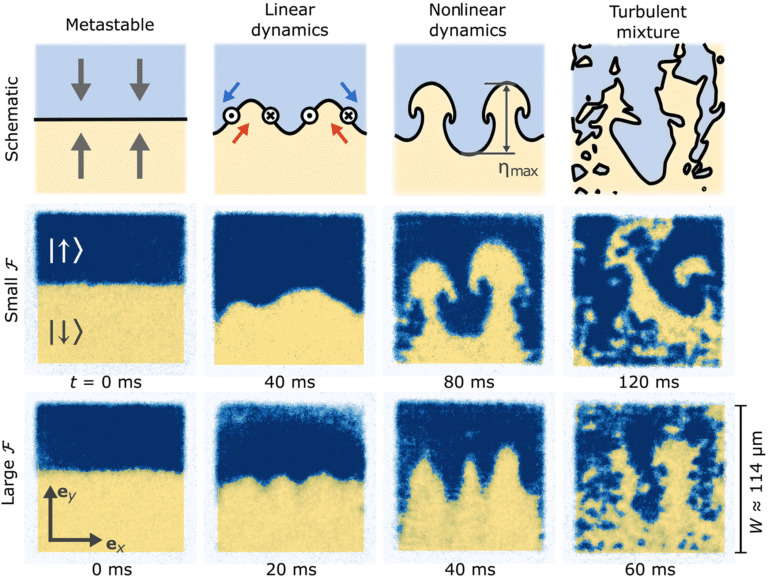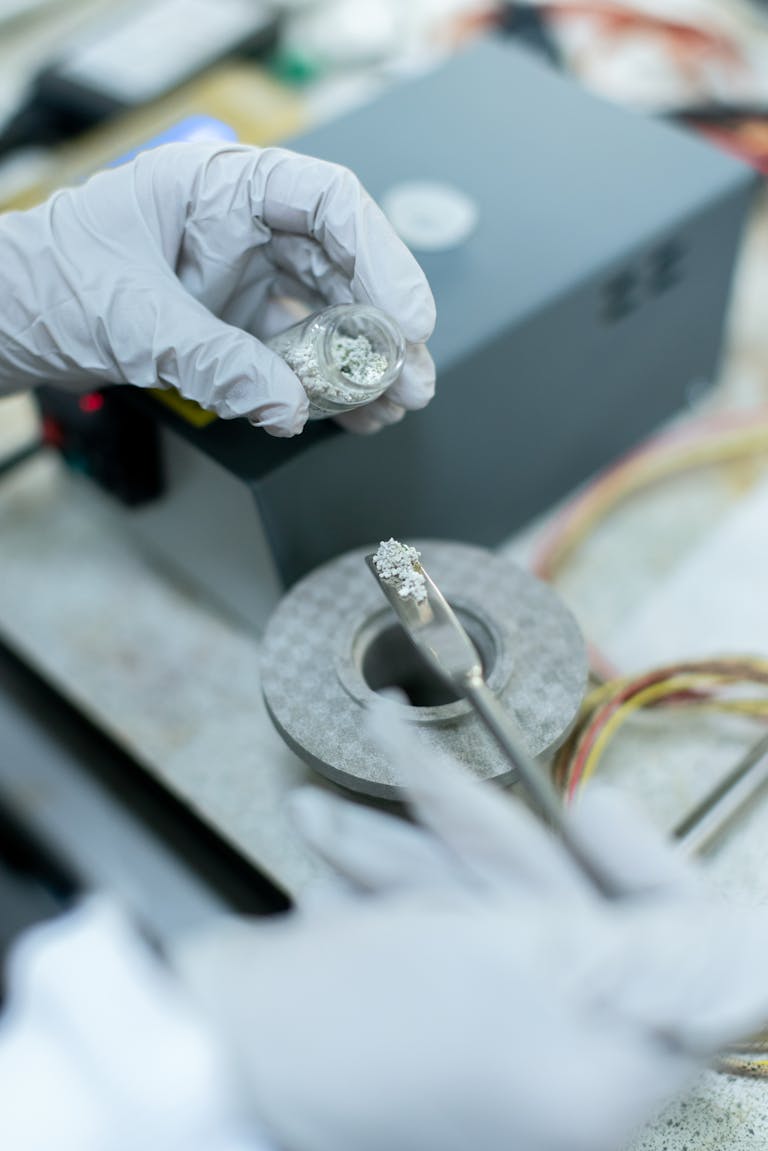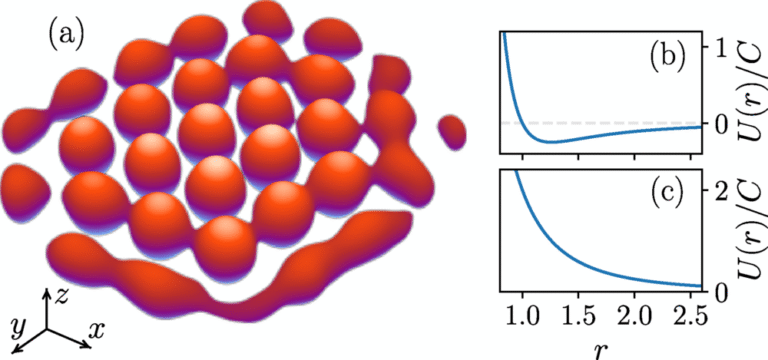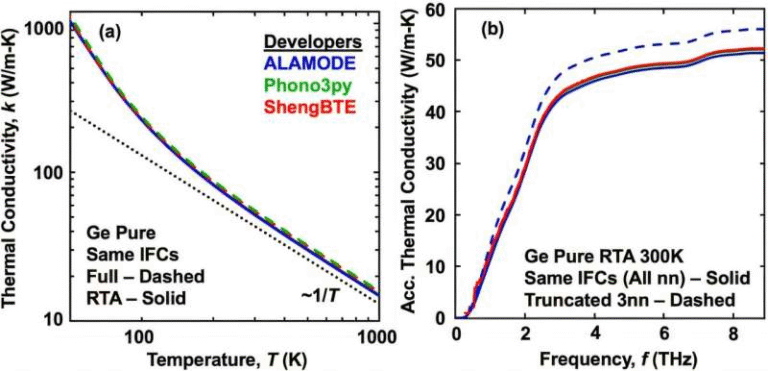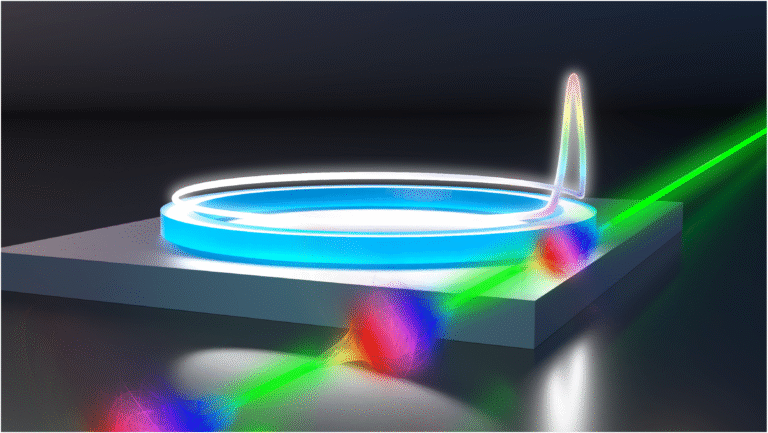The Hunt for Neutrinoless Double Beta Decay Gets a Powerful Noise-Cancelling Upgrade

Deep beneath a mountain in central Italy, scientists are conducting one of the most sensitive physics experiments ever designed — a search for a process so rare that it could fundamentally reshape our understanding of the universe. This is the Cryogenic Underground Observatory for Rare Events (CUORE), and it has just reached a new milestone by collecting two ton-years of data, an achievement that pushes it to the forefront of particle physics.
The latest results, recently published in Science, showcase how the CUORE team has developed an innovative noise-cancelling algorithm — a sort of “headphones for the universe” — to block out background vibrations and enhance their search for a phenomenon known as neutrinoless double beta decay.
What Is Double Beta Decay?
To understand what CUORE is looking for, let’s start with something already known: standard double beta decay. In this process, two neutrons inside an atom’s nucleus transform into two protons, releasing two electrons and two antineutrinos. Antineutrinos are the antimatter counterparts of neutrinos — ghostlike particles that rarely interact with anything.
This type of decay has been observed in several isotopes, including tellurium-130 (ⁱ³⁰Te), the isotope CUORE focuses on. It’s a proven, though extremely rare, natural process that helps physicists study weak nuclear forces and neutrino properties.
Now imagine the same process happening without the emission of any antineutrinos. That’s the neutrinoless double beta decay (0νββ). If this ever happens, it would mean that neutrinos and antineutrinos are actually the same particle — what physicists call a Majorana particle.
That single discovery would shake the foundations of modern physics. It would mean that lepton number conservation, a long-standing rule in the Standard Model of Particle Physics, isn’t absolute. And it could help explain one of the biggest mysteries of all: why the universe is filled with matter rather than an equal mix of matter and antimatter.
The CUORE Experiment: A Massive Detector Beneath a Mountain
CUORE is located at the Gran Sasso National Laboratory in Italy, a facility buried under nearly a mile of solid rock. The mountain acts as a natural shield from cosmic rays that could contaminate the experiment’s data.
The detector itself is a marvel of cryogenic engineering. It uses 988 cube-shaped crystals of tellurium dioxide (TeO₂), each cooled to just a fraction of a degree above absolute zero. These crystals serve two roles: they contain the isotope tellurium-130 and act as ultrasensitive bolometers — detectors that register the minute heat released during a decay event.
Even though CUORE sits in one of the quietest environments on Earth and is surrounded by radiation shielding made from ancient Roman lead (salvaged from a 2,000-year-old shipwreck), it still faces a big challenge: vibrational noise. Tiny tremors from earthquakes, ocean waves hitting the Italian coastline, or even muffled conversations nearby can distort the data.
That’s where CUORE’s latest advance comes in — its new noise-cancelling algorithm.
How CUORE Cancels Out the Noise
The CUORE team recently installed more than two dozen environmental sensors near the detector. These instruments measure temperature, sound, vibration, and electrical interference, providing a complete picture of the lab’s surroundings.
Using this data, researchers built a machine-learning-based algorithm that can tell the difference between a genuine particle event and unwanted “background” signals. Essentially, they learned to identify and subtract the environmental noise — like applying noise-cancelling technology on a cosmic scale.
The results were impressive. With this new filtering approach, CUORE’s scientists were able to refine their data and set a new upper limit on how often neutrinoless double beta decay might occur.
According to their latest analysis, if this rare decay happens in tellurium-130, it occurs less than once every 50 septillion years — that’s roughly one event per trillion trillion years. In practical terms, it’s one of the longest timescales ever measured in science.
Why This Matters
Every new limit that CUORE sets helps physicists narrow down the search for neutrinoless double beta decay. Even not finding it is valuable because it constrains theoretical models.
If such a decay were ever detected, it would confirm that neutrinos are Majorana particles, fundamentally changing our understanding of how mass works in the subatomic world. It could also provide direct evidence for a mechanism called leptogenesis, which might explain why the universe didn’t annihilate itself into radiation shortly after the Big Bang.
The experiment is led by the U.S. Department of Energy’s Lawrence Berkeley National Laboratory and involves over 20 institutions, including Yale University, whose researchers play a leading role.
Meet the Researchers Behind the Work
At Yale, Professor Reina Maruyama and Professor Karsten Heeger are central figures in the CUORE collaboration. They, along with research scientist Penny Slocum, postdoctoral researcher Tyler Johnson, engineer James Wilhelmi, and several graduate students — Ridge Liu, Maya Moore, and Zach Muraskin — contribute to data analysis, background reduction, and detector improvements.
Maruyama focuses on identifying and eliminating environmental noise, while Heeger, who also directs Yale’s Wright Laboratory, has been an international spokesperson for CUORE’s successor experiment, CUPID.
These researchers and their teams have helped push CUORE’s sensitivity to unprecedented levels, paving the way for the next generation of experiments.
The Next Step: CUPID
Once CUORE completes its data collection this year, its successor — CUPID, or the CUORE Upgrade with Particle Identification — will take over. CUPID will reuse much of CUORE’s infrastructure at Gran Sasso but introduce significant improvements.
The new experiment will use enriched molybdenum crystals instead of tellurium and will add highly sensitive light detectors to distinguish between true decay events and background noise. This particle identification feature will drastically improve accuracy and help confirm any potential detection of neutrinoless double beta decay.
CUPID is expected to achieve even better energy resolution and background suppression, pushing the field closer to the elusive discovery physicists have been chasing for decades.
Understanding the Scale of Rarity
To appreciate just how rare neutrinoless double beta decay would be, consider this: ordinary double beta decay already takes place only once every 10²⁰ to 10²¹ years in a given nucleus. That’s much longer than the current age of the universe, which is about 13.8 billion years (1.38 × 10¹⁰ years).
Now, neutrinoless double beta decay is thought to be even rarer — so rare that CUORE’s detectors might never see one directly. But that’s okay. Each incremental improvement helps physicists probe smaller and smaller probabilities, closing in on what nature allows.
How CUORE’s Results Compare Globally
CUORE is one of several leading experiments searching for 0νββ. Others include GERDA (using germanium-76), EXO and nEXO (using xenon-136), and KamLAND-Zen in Japan.
Together, these projects test different isotopes and methods. CUORE’s strength lies in its cryogenic precision and massive array of tellurium detectors, which together make it one of the most statistically powerful searches to date.
The current CUORE results, combined with those from other collaborations, suggest that if neutrinoless double beta decay does occur, its half-life must exceed about 10²⁵ years, setting strong constraints on neutrino physics models.
The Bigger Picture: Why Neutrinos Matter
Neutrinos are among the most mysterious particles known. They have an incredibly small mass — far less than any other known fermion — and can pass through entire planets without interacting.
Physicists already know there are three types of neutrinos (electron, muon, and tau), and that they can oscillate between these types as they travel, a discovery that earned the 2015 Nobel Prize in Physics.
However, one of the great unsolved puzzles is why they have mass at all. The Standard Model originally predicted them to be massless. The discovery of neutrinoless double beta decay would not only confirm their true nature but might also reveal how neutrinos acquired mass, potentially through mechanisms linked to physics beyond the Standard Model.
A Quest for New Physics
Every detail of CUORE’s data brings humanity closer to answering some of the deepest questions about the universe. By refining techniques like vibration filtering, temperature stabilization, and radiation shielding, scientists are developing tools that will outlast the experiment itself and benefit future research in quantum sensors and low-temperature physics.
CUORE’s success also demonstrates how international collaboration — from Italy’s Gran Sasso to Yale’s Wright Lab — can drive forward some of the most challenging experiments in science.
Whether or not neutrinoless double beta decay is eventually found, CUORE and its successors are mapping out the limits of what we can observe — a vital step toward discovering new physics.
Reference
Research Paper: Constraints on lepton number violation with the 2 tonne·year CUORE Dataset, Science (2025)
